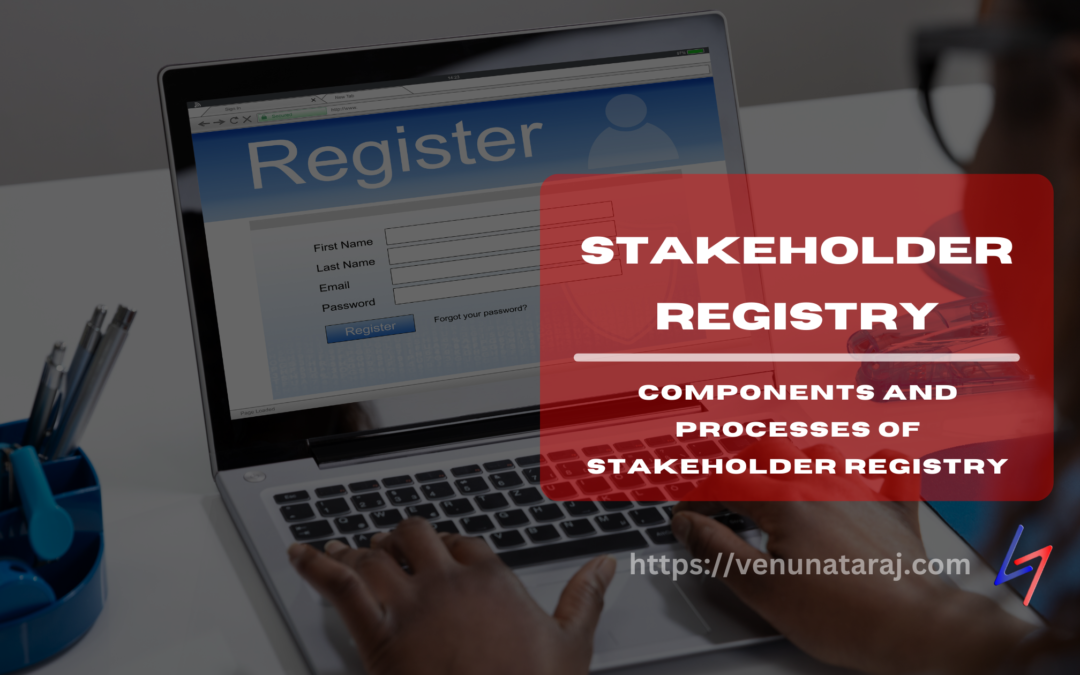Table of Contents
How to Create a Powerful Stakeholder Registry: A Step-by-Step Guide for Project Managers
In the world of project management, keeping track of all the people who have a stake in your project is crucial. That’s where a stakeholder registry comes in handy. Let’s explore what a stakeholder registry is, why it’s important, and how to create one effectively.
What is a Stakeholder Registry?
A stakeholder registry is a project document that contains key information about all the identified stakeholders. It’s like a detailed address book for your project, but with much more valuable information.
Why is a Stakeholder Registry Important?
Creating and maintaining a stakeholder registry is not just busywork. It serves several important purposes:
- Centralizes Stakeholder Information: It keeps all stakeholder data in one place, making it easy to access and update.
- Aids in Stakeholder Analysis: The registry helps you understand who’s who in your project ecosystem.
- Guides Engagement Strategies: With all the information at hand, you can develop targeted strategies for each stakeholder.
- Tracks Management Efforts: It allows you to monitor how you’re engaging with stakeholders over time.
Key Components of a Stakeholder Registry
A comprehensive stakeholder registry typically includes:
1. Stakeholder Identification Information:
- Name
- Role in the project
- Contact details
2. Assessment Information:
- Interest level (High/Medium/Low)
- Influence level (High/Medium/Low)
- Expectations from the project
3. Classification:
- Internal or External
- Primary or Secondary
4. Stakeholder Engagement Strategy:
- Preferred communication method
- Frequency of communication
- Key messages
5. Current Status:
- Current level of support for the project
- Any issues or concerns
The Process of Creating a Stakeholder Registry
Now, let’s walk through the steps to create an effective stakeholder registry:
1. Identify Stakeholders
Start by listing all individuals, groups, or organizations that have a stake in your project. Consider both internal stakeholders (like team members and executives) and external stakeholders (like customers and regulators).
Tip: Use brainstorming sessions with your team to ensure you don’t miss anyone.
2. Gather Stakeholder Information
Once you have your list, it’s time to collect relevant information about each stakeholder. This might involve:
- Reviewing project documents
- Conducting interviews
- Using surveys
- Leveraging your team’s knowledge
Tip: Be thorough, but respect privacy. Only collect information that’s necessary and relevant to the project.
3. Assess Stakeholder Influence and Interest
For each stakeholder, evaluate:
- Their level of interest in the project
- Their ability to influence the project’s outcome
This assessment helps you prioritize your engagement efforts.
Tip: Use a power/interest grid to visualize this information.
4. Develop Engagement Strategies
Based on your assessment, develop strategies for engaging with each stakeholder. Consider:
- How often you’ll communicate
- What information they need
- The best methods to reach them
Tip: Tailor your approach to each stakeholder’s preferences and needs.
5. Record in the Registry
Now, it’s time to put all this information into your stakeholder registry. You can use a spreadsheet, a project management tool, or a specialized stakeholder management software.
Tip: Keep the format simple and easy to update.
6. Regularly Review and Update
A stakeholder registry is a living document. As your project progresses:
- Stakeholders may change
- Their interests or influence levels might shift
- New stakeholders might emerge
Make sure to review and update your registry regularly.
Tip: Set a recurring task to review the registry, perhaps monthly or quarterly, depending on your project’s duration and complexity.
Best Practices for Maintaining Your Stakeholder Registry
- Keep it Accessible: Ensure team members who need the information can easily access the registry.
- Maintain Confidentiality: Some stakeholder information might be sensitive. Ensure you’re following data protection regulations.
- Use it Actively: Refer to your registry when planning communications or making decisions that affect stakeholders.
- Encourage Team Input: Your team members might have valuable insights about stakeholders. Encourage them to contribute to the registry.
- Link to Other Project Documents: Your stakeholder registry should work in tandem with other project management tools, like your communication plan or risk register.
Real-World Example: The Crossrail Project
The Crossrail project in London, one of Europe’s largest infrastructure projects, demonstrates the importance of a comprehensive stakeholder registry. With over 10,000 stakeholders identified, they used specialized software to manage their registry. They categorized stakeholders into 20 different groups and regularly updated the registry throughout the 10-year project duration.
This meticulous approach to stakeholder management helped them navigate complex relationships with local communities, businesses, and government bodies, contributing to the project’s overall success.
Conclusion
Creating and maintaining a stakeholder registry might seem like extra work, but it’s an investment that pays off throughout your project. It helps you stay organized, communicate effectively, and manage relationships proactively. Remember, successful projects are built on strong stakeholder relationships, and your stakeholder registry is the foundation for building those relationships.
By following these steps and best practices, you’ll be well-equipped to create a powerful stakeholder registry that drives your project towards success. Happy stakeholder managing!
Additional Reads:
Understanding Stakeholder Category
Managing Difficult Stakeholders Virtually
Stakeholder Communication for Project Success
Stakeholder Management for Effective Project Risk Management

